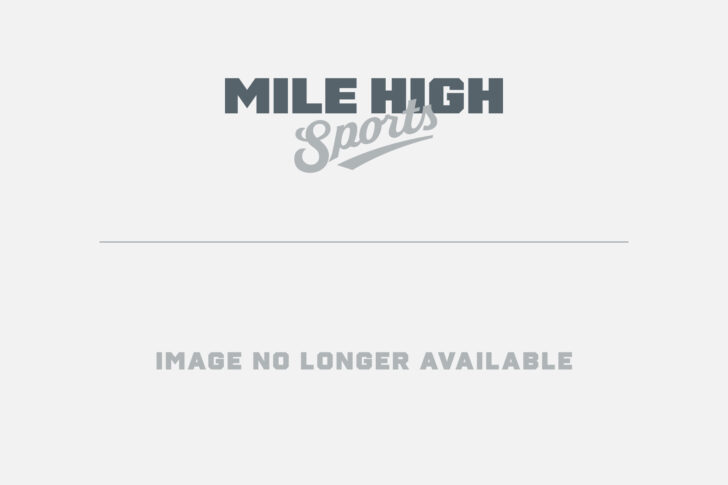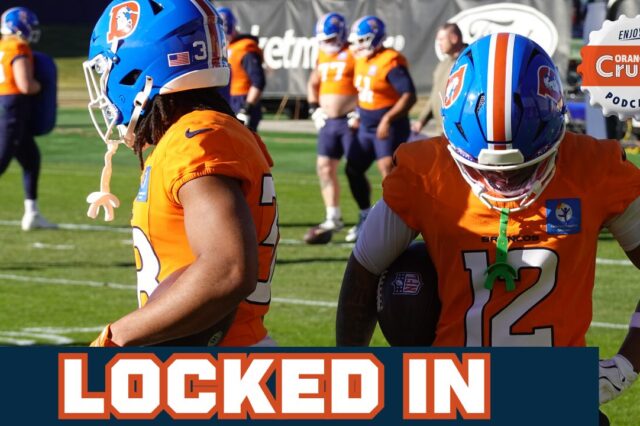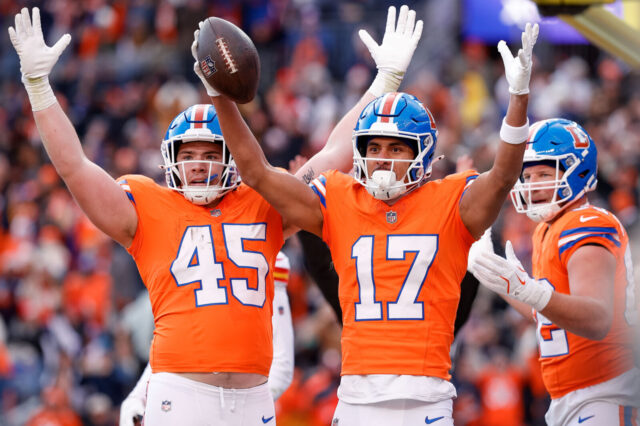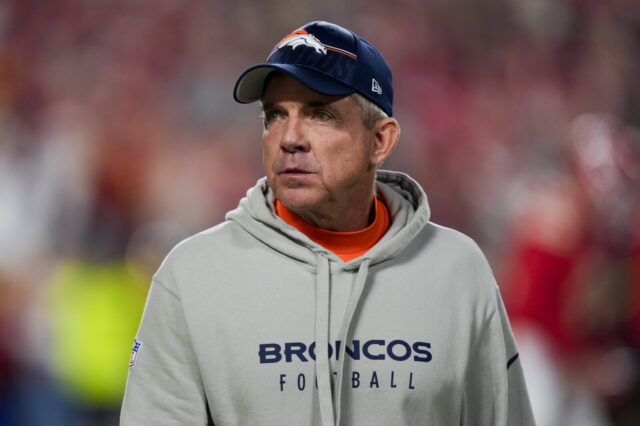The 2017 NFL Draft is coming quickly, and while there is plenty of excitement over the possibilities, there is also a certain amount of worry. The draft is far from being an exact science, and it is hardly rare to see top picks fail to make it in the NFL.
We have seen players struggle to pick up a pro system. Sometimes an injury can keep a player from reaching their full potential. Many times, a team is desperate for a specific position, and so they select a player far too early. Those players are simply incapable of meeting their expectations. Of course, it is also very common to see a young player that isn’t talented enough, or doesn’t work hard enough to make it.
The Denver Broncos are hardly a stranger to grabbing a draft bust here or there. Here is a look at the worst five draft picks in Broncos history, and here’s hoping that we don’t have to add anyone to this list anytime soon.
5. 1977: Steve Schindler, OG, Boston College, round 1, pick 18
By 1977, the Denver Broncos had built up their vaunted “Orange Crush” defense, but their offense was still in need of talent. They selected Schindler, a three-year starter at Boston College, hoping he would improve their offensive line.
Unfortunately, Schindler was unable to even dent the starting lineup, on what was a very average unit. He lasted just two seasons, starting three times, and making us all wonder what might have been.
Following the Broncos selection of Schindler, the New England Patriots selected Tennessee wide receiver Stanley Morgan with the 25th pick, the New York Jets grabbed Cal wide receiver Wesley Walker at No. 33 and in the third round, the Tampa Bay Buccaneers took offensive guard Charley Hannah out of Alabama. Hannah would play 12 seasons in the NFL, and eventually win a Super Bowl, with the Oakland Raiders.
4. 1992: Tommy Maddox, QB, UCLA, round 1, pick 25
It wasn’t his fault. Head coach Dan Reeves and starting quarterback John Elway were feuding, and Maddox was simply the pawn caught in the middle. Reeves wanted Maddox, the young UCLA quarterback, who he felt would be the heir apparent to Elway.
Of course, Elway was furious. He was still years away from retirement, and the Broncos had plenty of other more pressing needs. The defense was undermanned, and some new blood was needed in the wide receiving corps.
Reeves ignored wide receivers Carl Pickens and Jimmy Smith, as well as future defensive stars Robert Porcher, Darren Woodson and Levon Kirkland to take Maddox. Maddox would last just two seasons in Denver, and would eventually be traded to the Los Angeles Rams for a fourth-round draft pick. Reeves would be fired following the 1992 season, and Elway would have to wait a little longer to get a better supporting cast.
3. 1991: Mike Croel, LB, Nebraska, round 1, pick 4
Upon first glance, Croel looks like a solid pick. Taken with the fourth pick over future stars like Syracuse wideout Herman Moore, and Colorado defensive end Alfred Williams, Croel came to Denver and made an immediate impact.
In his rookie debut, he logged 84 tackles, and 10 sacks. He was named the 1991 NFL Rookie of the Year, and it appeared that he could be a future superstar. Yet, Croel could never match that freshman season.
He played three more seasons in Denver, and was never able again to capture that rookie magic. He logged a total of 10 sacks in all three of those seasons combined. The Broncos cut Croel following the 1994 season, and he bounced from the New York Giants, to the Baltimore Ravens, and then the Seattle Seahawks. He was completely out of football before he was 30 years old.
2. 1998, Marcus Nash, WR, Tennessee, round 1, pick 30
After winning Super Bowl XXXII, the Broncos were looking to add some depth at wide receiver. Rod Smith and Ed McCaffrey had combined to catch 115 passes in 1997, but the third leading wide receiver on the team was Willie Green, with just 19 catches.
In his senior season at Tennessee, Nash had caught 76 passes for 1,170 yards, and 13 touchdowns. Unfortunately, as we would learn later, Tennessee quarterback Peyton Manning had a knack for making the players around him look better than they were.
Denver bypassed receivers like Jerome Pathon, Jacquez Green, and of course Hines Ward, and selected Nash. He would play just 10 games in a Broncos uniform, and catch a total of four passes. Just two weeks into his sophomore season, he was traded to the Miami Dolphins in exchange for running back John Avery. The Dolphins would waive Nash one week after the trade.
1. 1988: Ted Gregory, NT, Syracuse, round 1, pick 26
If you have ever wondered why NFL draft prospects are poked, prodded, and forced to participate in the NFL Scouting Combine? Look no further than Ted Gregory. He may not have been the lone reason, but he was definitely a contributing factor.
The Broncos chose to bypass such talents as Ohio State’s Chris Spielman, Arizona State’s Eric Allen and Oklahoma State’s Thurman Thomas, and instead selected Gregory. He was an undersized, but tenacious nose tackle from Syracuse, who had been named an All-American in 1987. In those days, teams didn’t always meet their prospects in person prior to drafting them.
Gregory arrived in Denver, where he was met at the airport by head coach Dan Reeves. The coach was struck by the fact that Gregory looked closer to 5-foot-9, than his listed height of 6-foot-1. In addition to the size discrepancy, Gregory also had a knee injury that hadn’t completely healed. He didn’t even make the opening day roster.
The Broncos were being widely criticized for the selection of Gregory, so prior to Week 1, he was traded to the New Orleans Saints. He played three games with the Saints before blowing out his knee again. He never played in the NFL again.



